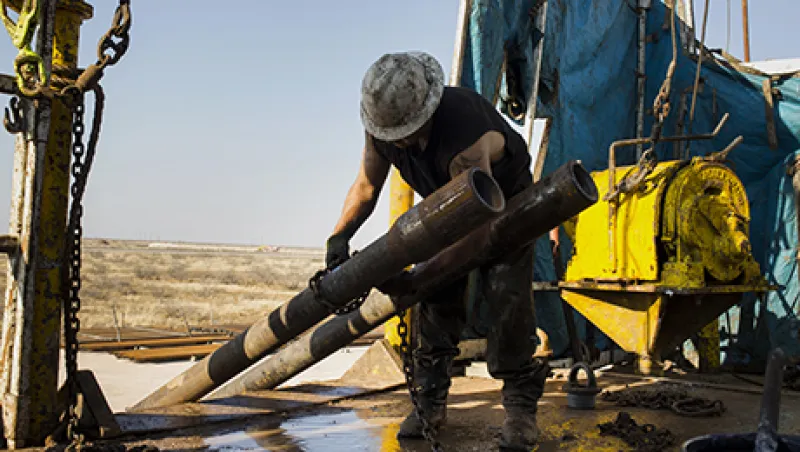Over the past decade, as the shale fracking boom has spread across oil-and-gas-rich areas of the U.S., from North Dakota to Oklahoma and Texas, money and growth have followed. Drilling towns, reminiscent of towns that grew up along the routes of the country’s first railroads, have created opportunities for every industry, from energy to real estate to retail. Exploration and production firms have sprouted quickly and created thousands of jobs, many of them in pipeline building, as E&P companies build their own, rather than wait for the shipping and storage arm of the burgeoning industry to catch up.
But the tide has turned in recent months, with low oil prices putting a squeeze on shale producers, whose business has a higher cost than traditional oil production. They must continue to produce, regardless of the commodity price, to cover costs, putting many in trouble as oil hovers around $60 per barrel. The price plunge of the past several months has led to 11 straight weeks of horizontal shale oil rig closures and delays in new development projects.
Still, experts are optimistic that U.S. shale will survive any effort to push it out of the oil market, and the past two weeks has seen promising rebounds in price. But to remain profitable, producers will need to reevaluate their strategies and capital structures.
The shake-up caused by low oil prices has become a motivator, and experts say it will create a slew of new deal opportunities, particularly for companies that specialize in the midstream part of the industry that focuses on building pipelines and shipping and storing oil and gas, as E&P companies in need of equity sell off their pipelines in the coming months. “Midstream is where the major opportunity is,” says Charlie Smith, principal and CIO of Pittsburgh-based Fort Pitt Capital Group, a value investment firm with $1.4 billion under management.
Houston-based energy infrastructure company Kinder Morgan has agreed to two deals in the past several weeks that support this trend: In January Kinder Morgan said it would expand its presence in the Bakken with the purchase of Oklahoma-based pipeline master limited partnership Hiland Partners for $3 billion, and last week it agreed to buy three storage terminals from Dutch midstream firm Royal Vopak in the U.S. for $158 million.
Though the deals won’t all be so large, Smith sees more like these on the horizon. “I think the trend is probably going to accelerate, because producers need capital, particularly if they’re levered,” he says. “A lot of them have done a lot of drilling with debt.”
Most shale companies are focused on the upstream part of the product life cycle, which primarily includes exploration and production; selling their storage and shipping operations won’t cut into their core business. In addition, pipelines are solid assets with established value, unlike the oil that runs through them, which has become difficult to value with the recent price turbulence.
“In a time like the present, when it’s hard to make deals on oil-based assets because no one knows what a good price is, it’s a lot easier to sell a midstream system that runs on a fee-for-service basis,” says David Asmus, the Houston-based leader of law firm Morgan Lewis & Bockius’s energy transactions practice.
There’s a lot of interest in these businesses, both among pipeline companies like Kinder Morgan and among private equity players looking to build up their energy holdings, and Asmus expects to see more of those kinds of sales in the first half of this year.
The upstream piece of the market is another story. Asmus says he’s still seeing more planned upstream acquisitions canceled than generated because transactions among conventional players in the industry are very hard to price right now.
Deals in that arena will likely pick up later in the year, if oil prices reach the sort of equilibrium that many predict. The industry may also see a good deal of M&A activity as oil field services companies consolidate, responding to a demand for lower prices for drilling and associated services.
“It’s going to take a while for the price to move back up to a territory that’s reasonable for fracking,” which is typically above $60 per barrel, says Joel Moser, founder and CEO of Aquamarine Investment Partners, a New York–based real assets fund.
According to reports from Goldman Sachs Group, Barclays and UBS in recent weeks, an oil recovery — which for shale would be stable prices in the $60 to $70 per barrel range — could be as much as six months away. “That really is longer than most investors or certainly most debt providers are going to want to wait,” Moser says.






